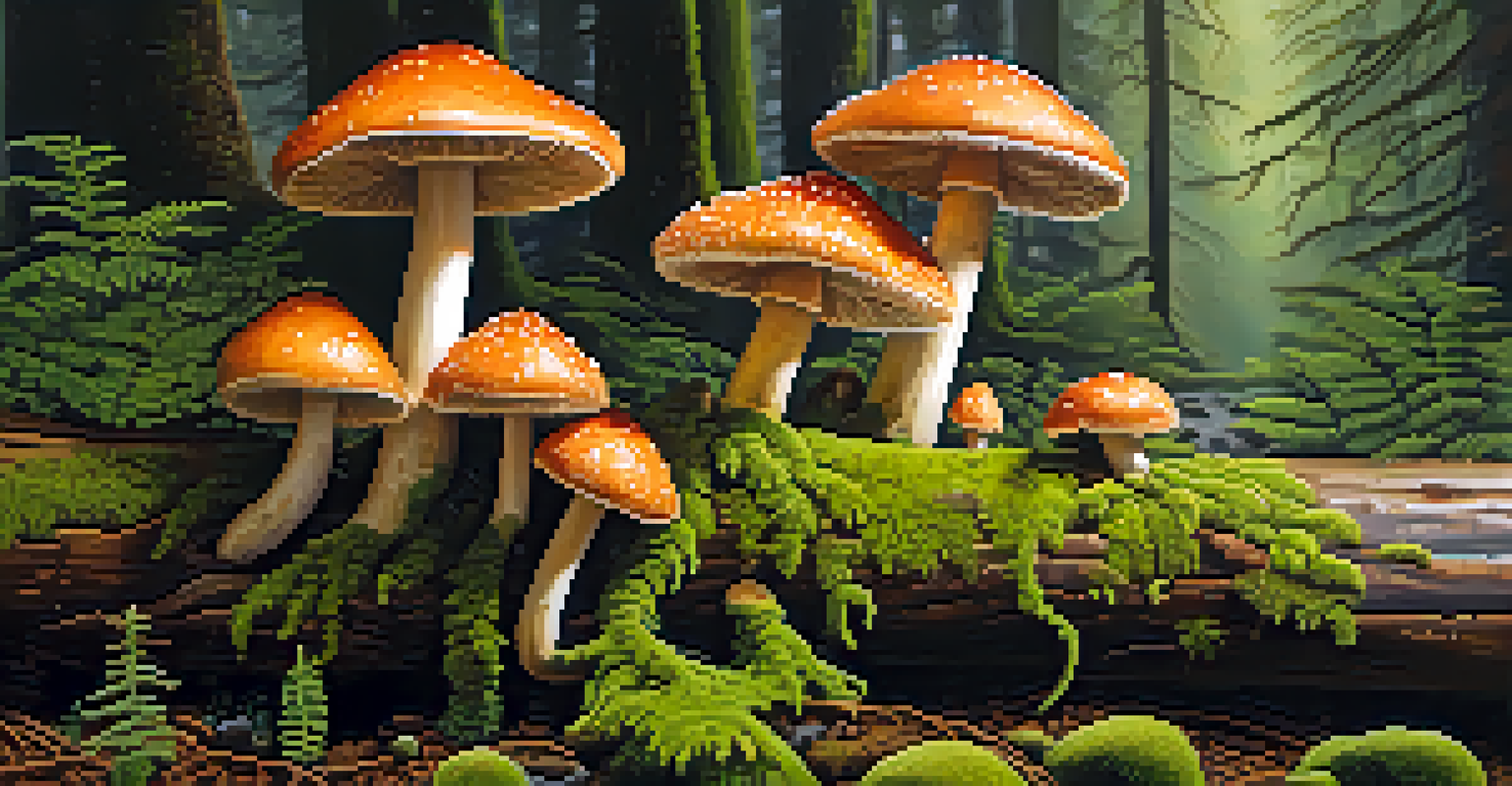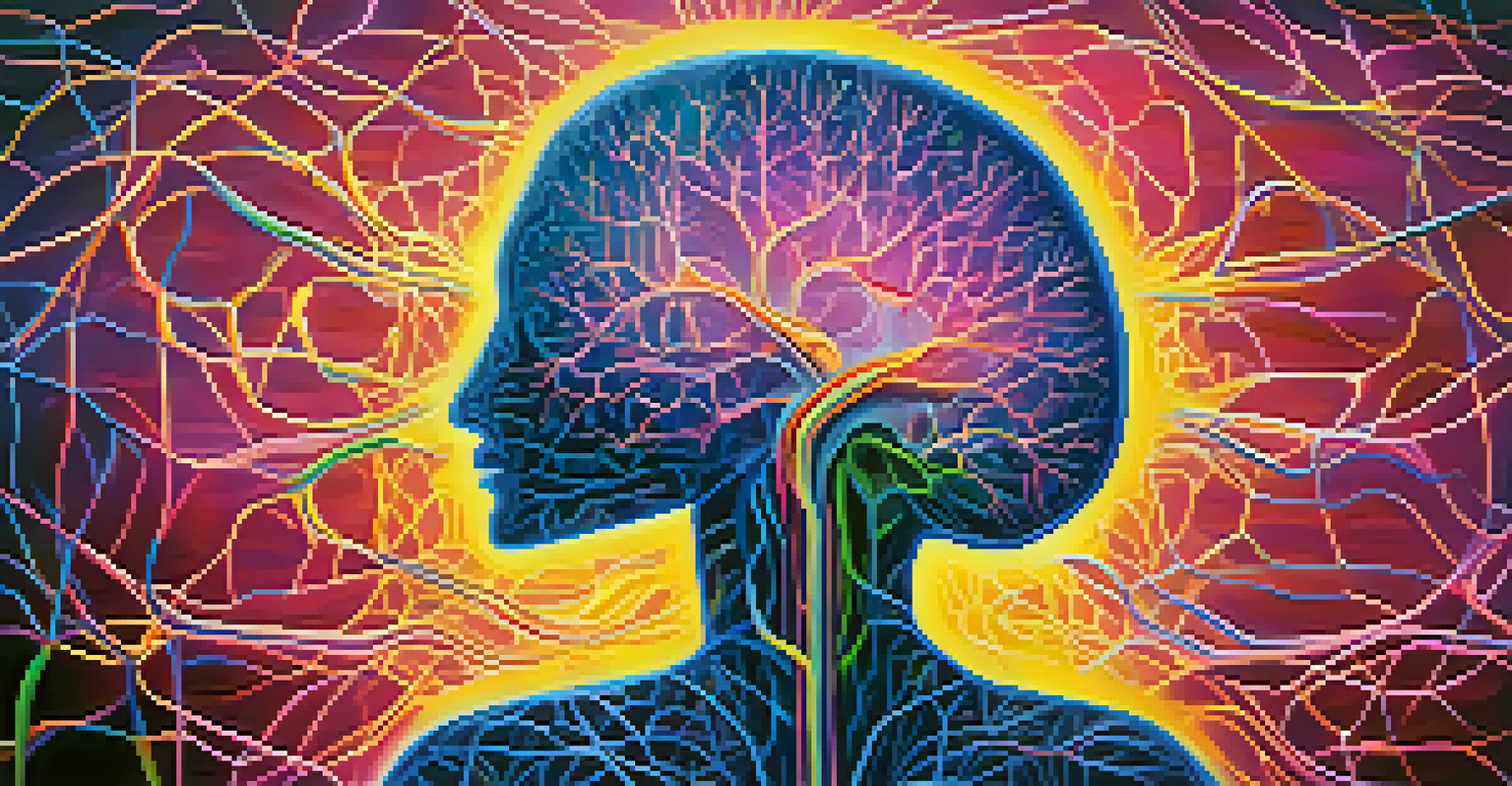Entheogens and Neurochemistry: The Bliss Connection

Understanding Entheogens: More than Just Substances
Entheogens are substances that have been used for centuries in various cultures, often in spiritual contexts. These compounds, such as psilocybin and ayahuasca, are known to induce altered states of consciousness and profound experiences. They are not just recreational drugs; rather, they serve as tools for personal and spiritual transformation, helping users connect with deeper aspects of their psyche.
The experience of bliss and connectedness can serve as a catalyst for profound personal change.
The term 'entheogen' itself means 'generating the divine within,' showcasing their role in facilitating mystical experiences. Many users report feelings of bliss, heightened awareness, and a sense of unity with the universe. This connection is what intrigues researchers and advocates alike, as they seek to understand the underlying mechanisms at play.
As we dive deeper into the world of entheogens, it's essential to appreciate their historical and cultural significance. Ancient civilizations utilized these substances in rituals and ceremonies, believing they could bridge the gap between the physical world and the spiritual realm. This rich history adds layers to our understanding of their effects on the human mind.
The Science of Bliss: Neurochemistry Explained
Neurochemistry is the study of how chemicals in the brain influence our thoughts, feelings, and behaviors. When we consume entheogens, they interact with neurotransmitters, the chemical messengers in our brain, altering our mood and perception. For instance, psilocybin mimics serotonin, a neurotransmitter closely linked to feelings of happiness and well-being.

These interactions can lead to a range of emotional experiences, including deep joy and bliss. Many users describe a feeling of interconnectedness with nature and other people, which can be attributed to the way entheogens affect brain regions involved in emotion and empathy. This neurochemical dance can create a profound sense of peace and joy that lingers long after the experience.
Entheogens as Spiritual Tools
Entheogens, such as psilocybin and ayahuasca, are not merely recreational drugs; they serve as tools for personal and spiritual transformation.
Understanding this science helps demystify the powerful effects of entheogens. It reveals that these substances can potentially reshape our emotional landscapes and alter our perceptions of reality, leading to transformative experiences that many seek in our fast-paced world.
The Role of Serotonin in Blissful Experiences
Serotonin is a key player in regulating mood, and its role cannot be overstated when discussing the effects of entheogens. This neurotransmitter is often referred to as the 'feel-good' chemical, contributing to feelings of happiness and well-being. When entheogens like psilocybin increase serotonin levels, users often report heightened emotional states and experiences of bliss.
Entheogens are not just recreational drugs; rather, they serve as tools for personal and spiritual transformation.
The surge in serotonin can enhance sensory perception and emotional clarity, allowing individuals to experience life more vividly. Imagine watching a sunset that feels more radiant or listening to music that resonates deeply within you. These heightened experiences can foster a sense of awe and connection, central to the blissful feelings often described in entheogenic experiences.
Moreover, this connection highlights the potential therapeutic applications of entheogens in mental health treatment. Research suggests that by modulating serotonin levels, these substances may offer new avenues for treating depression and anxiety, conditions often characterized by diminished emotional states.
Entheogens and the Default Mode Network (DMN)
The Default Mode Network (DMN) is a network of brain regions that is active when we are at rest and engaged in self-referential thought. Interestingly, entheogens have been shown to reduce the activity in the DMN, which may explain the feelings of ego dissolution and interconnectedness reported by users. This reduction allows individuals to step outside of their typical thought patterns and experience a broader state of consciousness.
When the DMN quiets down, users often report feeling less constrained by their personal narratives and more open to new perspectives. This shift can create a space for profound insights and emotional release, paving the way for blissful experiences. The sense of losing oneself in a larger existence can be both liberating and euphoric.
Neurochemistry's Role in Bliss
The interaction of entheogens with neurotransmitters like serotonin and endorphins can lead to profound emotional experiences and heightened states of joy.
By studying the DMN's interaction with entheogens, researchers are uncovering valuable insights into how our brains create the experience of self and consciousness. This knowledge could have significant implications for understanding the nature of human experience and the potential for achieving states of bliss.
The Impact of Endorphins on Blissful States
Endorphins, often dubbed the body's natural painkillers, play a crucial role in our feelings of pleasure and well-being. When we engage in activities that bring us joy, our body releases endorphins, triggering sensations of happiness and bliss. Entheogens can also stimulate endorphin release, enhancing the overall emotional experience during a journey.
This release can lead to feelings of euphoria and pain relief, making difficult emotions more manageable. Imagine the exhilaration of laughter after a long day; that surge of happiness is similar to what users may experience during an entheogenic trip. The combination of altered perception and endorphin release can create a deeply transformative experience.
Additionally, the interplay between endorphins and other neurochemicals during entheogenic experiences can help individuals confront emotional pain and trauma. By fostering a sense of emotional safety and bliss, users may find it easier to process and heal from past wounds, illustrating the therapeutic potential of these substances.
Therapeutic Applications of Entheogens: A New Frontier
The therapeutic potential of entheogens is garnering attention in the mental health field, as researchers explore their use for conditions such as depression, PTSD, and addiction. Studies have shown that when combined with therapy, entheogens can help individuals gain insights and foster emotional healing. This is largely attributed to their ability to alter neurochemistry and enhance therapeutic processes.
For many, the experience of bliss and connectedness can serve as a catalyst for profound personal change. Imagine being able to face long-held fears or traumas while feeling a deep sense of support from both the universe and fellow humans. This transformative power is what makes entheogens a promising area of study in psychology and psychiatry.
Therapeutic Potential of Entheogens
Research is exploring the use of entheogens in treating mental health conditions, offering new pathways for emotional healing and personal growth.
However, it's essential to approach this frontier with caution and respect. While the potential benefits are exciting, entheogens are not a one-size-fits-all solution. Ongoing research aims to understand the best practices for their use, ensuring safety and efficacy for those seeking healing through these powerful substances.
Navigating the Future: Entheogens and Society
As society becomes more open to the conversation surrounding entheogens, we find ourselves at a pivotal moment. The increasing acceptance of these substances for therapeutic use could reshape our understanding of mental health and wellness. Imagine a future where individuals can access support and healing through guided entheogenic experiences, leading to profound personal and communal transformation.
This shift could also challenge societal norms around drug use and mental health treatment. By viewing entheogens as tools for healing rather than mere recreational substances, we can foster a culture that prioritizes well-being and connection. This change requires ongoing education and open dialogue to dispel misconceptions and promote responsible use.

Moving forward, it’s crucial to balance excitement with responsibility. Ensuring that entheogenic practices are grounded in respect for tradition, science, and individual safety will be key to their positive integration into society. In this way, we can harness the blissful potential of these substances while fostering a deeper understanding of our shared humanity.